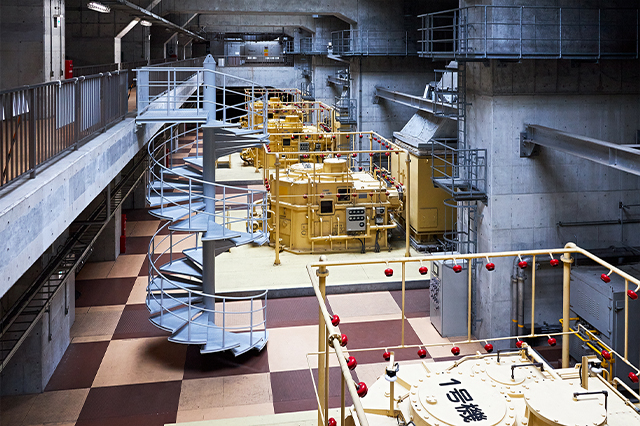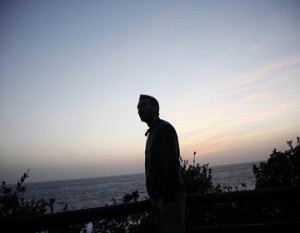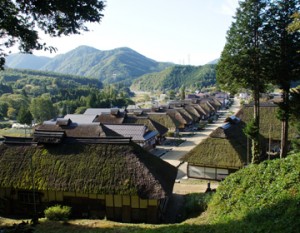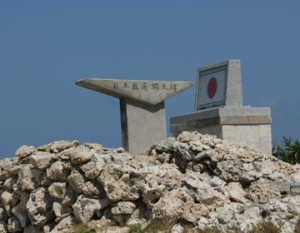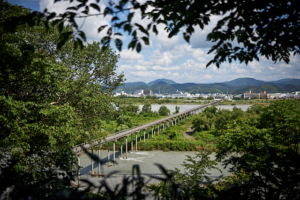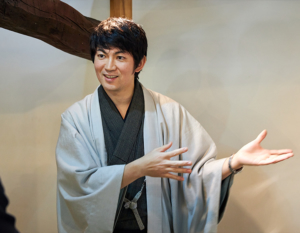The Metropolitan Area Outer Discharge Channel, one of the world’s largest underground discharge channels
The Metropolitan Area Outer Discharge Channel in Kasukabe City, Saitama Prefecture, from the outside, is merely a building along the Edo River. However, about 50 meters beneath the surface hides a 6.3-km-long water discharge channel. With an open capacity of up to 670,000 m3, the facility is one of the world’s largest underground water discharge channels, designed to take water from five small and medium-sized rivers flowing nearby, including the Nakagawa, Kuramatsu, Oochikotone, No. 18, and Yukimatsu Rivers, underground and discharge it into the Edo River.
Also used in the movie “Ton de Saitama”
The facility is also used in the movie “Ton de Saitama,” where people gather to liberate Saitama, because of its temple-like structure with giant pillars.

Metropolitan Area Outer Discharge Channel with an “Underground Temple”
Descending a long flight of stairs, one finds a vast space lined with countless koban-shaped pillars. There is some humidity, but there is no smell like sewage. It was hot and humid outside, but this underground space was cool and pleasant. This is the huge pressure-controlled water tank (177 m long, 78 m wide, and 18 m high), known as the “Underground Temple. When there was no water, as in this case, it was often used for filming battle scenes in special effects movies (filming is currently suspended). (The site is currently closed to filming.) There is no other space or view like this one.
The five shafts, from Shafts 1 to 5, are approximately 70 m deep and have an inner diameter of approximately 30 m. The system is designed to take in river floodwaters and channel them into a pressure regulating tank in a controlled manner.
The Metropolitan Area Outer Discharge Channel, which played an active role in preventing flooding
The area around Kasukabe City, Saitama Prefecture, where the Metropolitan Area Outer Discharge Channel is located, used to be a popular and populated area within commuting distance to Tokyo, but the low ground level used to cause flooding every time there was heavy rain. It was in the 1985’s that the basic concept of the Metropolitan Area Outer Discharge Channel was formulated for the purpose of flood control improvement. After conducting surveys, design, and land acquisition, construction work began in 1993, and the project was partially completed in 2006.
In October 2028, when Typhoon No. 19 caused rivers in various areas to overflow and burst their banks, the Metropolitan Area Outer Discharge Channel was in operation, drawing in floodwaters from small and medium-sized rivers and draining them into the Edo River, thereby reducing damage in the surrounding areas, and its success was widely reported in the media.

Tour of the “pressure regulating tank” is also available.
This kind of facility is rare in the world, and many visitors from overseas come to see it. Tours are also offered to help visitors learn more about the role of the Metropolitan Area Outer Discharge Channel, including a tour of the popular underground temple “pressure control tank,” a walk through a previously undisclosed work passage, and a descent halfway down the stairs inside the shaft (content depends on the course; the pump course is currently suspended as of December 2020). The guide is only available in Japanese, but there is also an application that allows visitors to simulate the experience of water being stored in a giant water tank, as well as a multilingual audio guide application for foreign visitors. Hidetoshi Nakata has also brought friends from overseas as a surprise in the past. It goes without saying that this underground water discharge channel protects the lives of the people living in the surrounding area. The pursuit of functionality has resulted in a beautiful and mysterious space. It could be said that this place is also a space with functional beauty.




